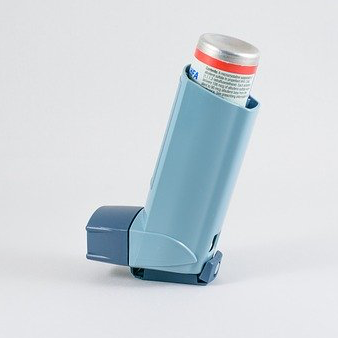Air Pollutants Cause Asthma, Persistent Wheezing
There are several factors, both environmental and familial, that are associated with a higher risk of developing asthma and persistent wheezing.

Children exposed to higher levels of PM2.5 are more likely to develop asthma and persistent wheezing than those who are not exposed, according to recent study findings.
The findings supported emerging evidence that exposure to air pollution may influence the development of asthma.
Gitte Holst, MD, and a team of Denmark-based colleagues identified risk factors for the onset of asthma and persistent wheezing in children. The team followed Danish children born from 1997-2014 for asthma and onset and persistent wheezing. The national registry used contained data on all people admitted to public hospitals from 1977 onwards. Patients were classified as having asthma or persistent wheezing, or both if they were admitted to a hospital or had been treated as an outpatient and received an initial diagnosis of asthma as the final diagnosis at their visit or if they had at least 2 asthma medicine prescriptions.
The team modelled concentrations on an hourly basis for the country of Denmark from January 1, 1997 to December 31, 2014. Specifically, they were interested in different gases and aerosols or particles like ozone, nitrogen dioxide, nitrate, combined nitrogen dioxide and particulate matter, among others. Air pollution data were collected from the Danish air pollution modelling system DEHM/UBM(THOR). An average of hourly pollution concentrations was used during the past 3, 6, and 12 months before the index date.
In an effort to better understand and assess family-related factors, the investigators got information about parental asthma from the Danish National Patient Register based on asthma diagnosis and a minimum of 2 prescriptions of asthma medicine. A birth registry provided information on mothers’ reported smoking.
More than 3 million children were included in the study and 122,842 were identified as having asthma and persistent wheezing. A majority of the cases (83%) occurred in children younger than 3 years old with a mean age of 1.9 years old for developing asthma and wheezing.
The investigators reported parental asthma was positively associated with a higher risk of asthma and persistent wheezing in their children. If a mother had asthma, there was an even higher risk of asthma than if the father had the condition (HR, 1.72; 95% CI, 1.72-1.77; vs HR, 1.51; 95% CI, 1.48-1.53). Both parents having asthma was associated with a 2.4-fold (2.34-fold to 2.47-fold) increased risk of asthma and persistent wheezing. Further, maternal smoking during pregnancy was linked with increased asthma risk.
Incomes and educational levels were independently associated with asthma and persistent wheezing. Higher household income and educational level were associated with a reduced risk of asthma and persistent wheezing.
For air pollutant associations, findings of initial analyses indicated PM2.5, PM10, nitrate, ammonium, and secondary inorganic aerosols were positively associated with asthma and persistent wheezing. Nitrogen dioxide, sulphur dioxide, elemental carbon, and organic carbon were inversely associated with asthma and persistent wheezing.
The overall findings suggested Danish children who had parents with asthma, a mother who smoked during pregnancy, or parents with low education and income were at a higher risk of developing asthma and persistent wheezing. Such findings were independent of exposure to air pollution. Children exposed to high levels of PM2.5 were also at a greater risk of developing the conditions.
The study, “Air pollution and family related determinants of asthma onset and persistent wheezing in children: nationwide case-control study,” was published online in BMJ.